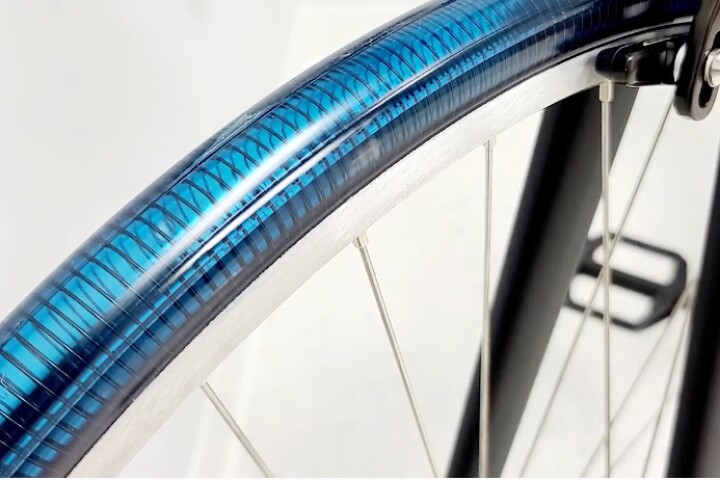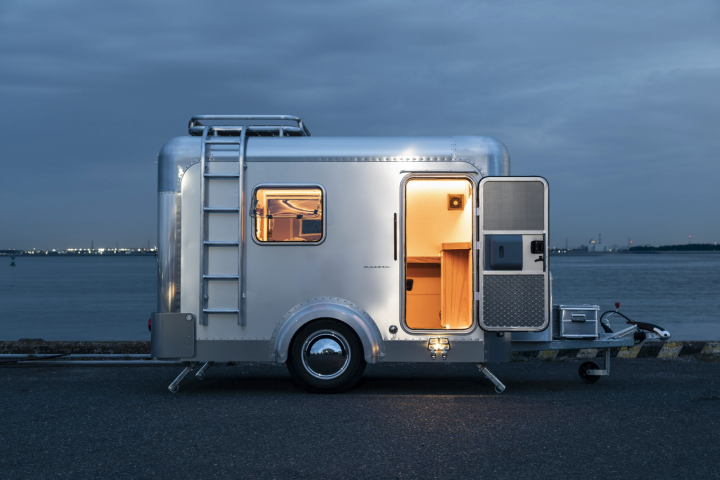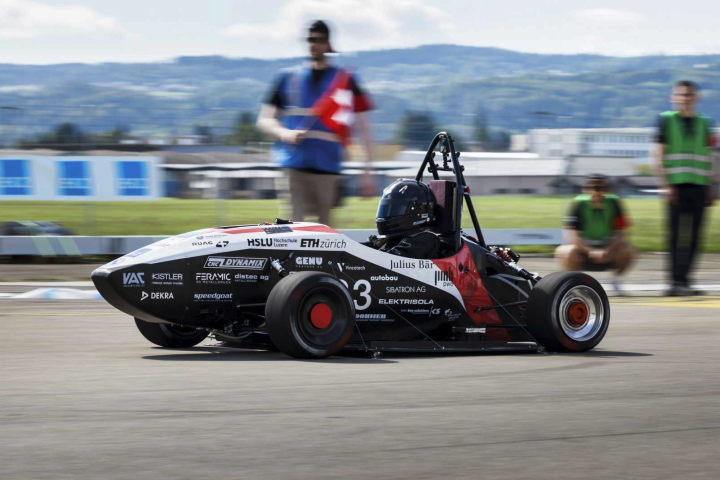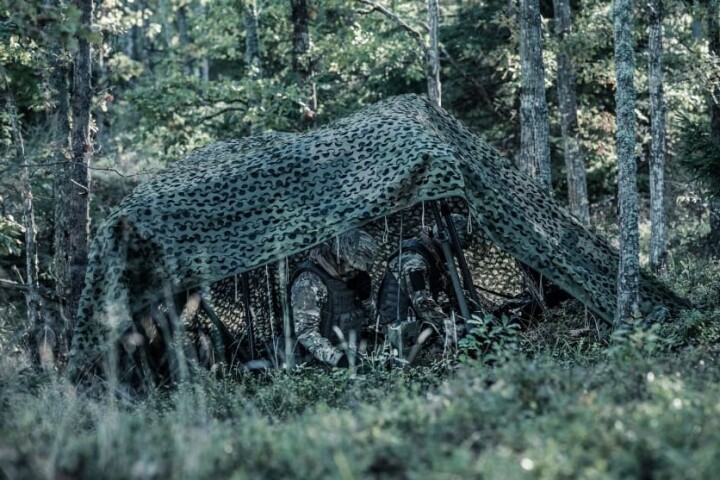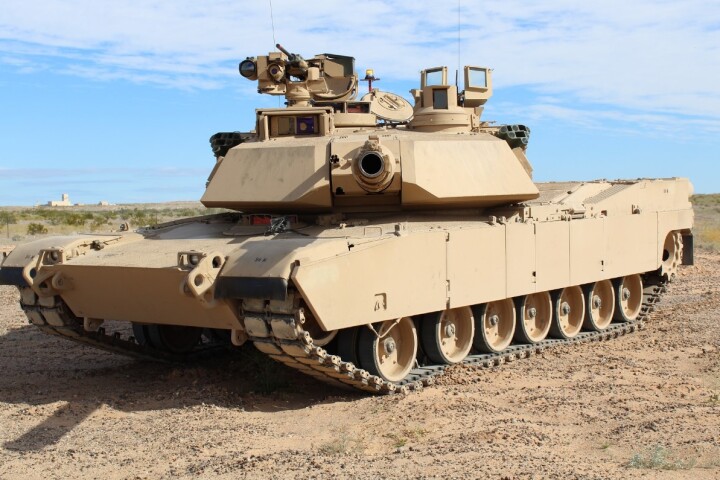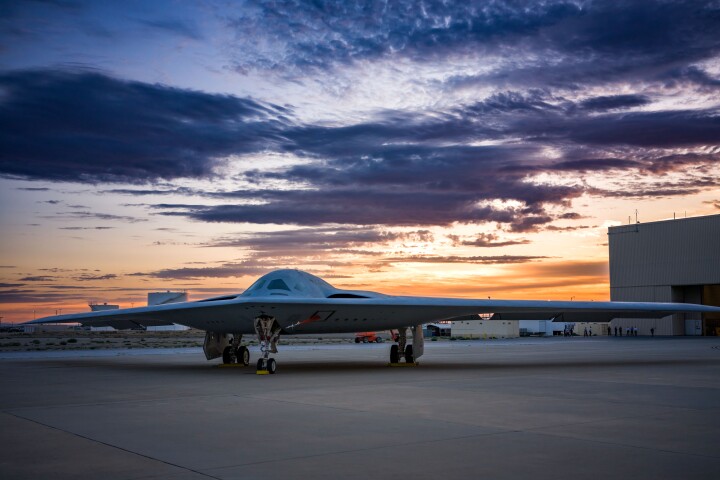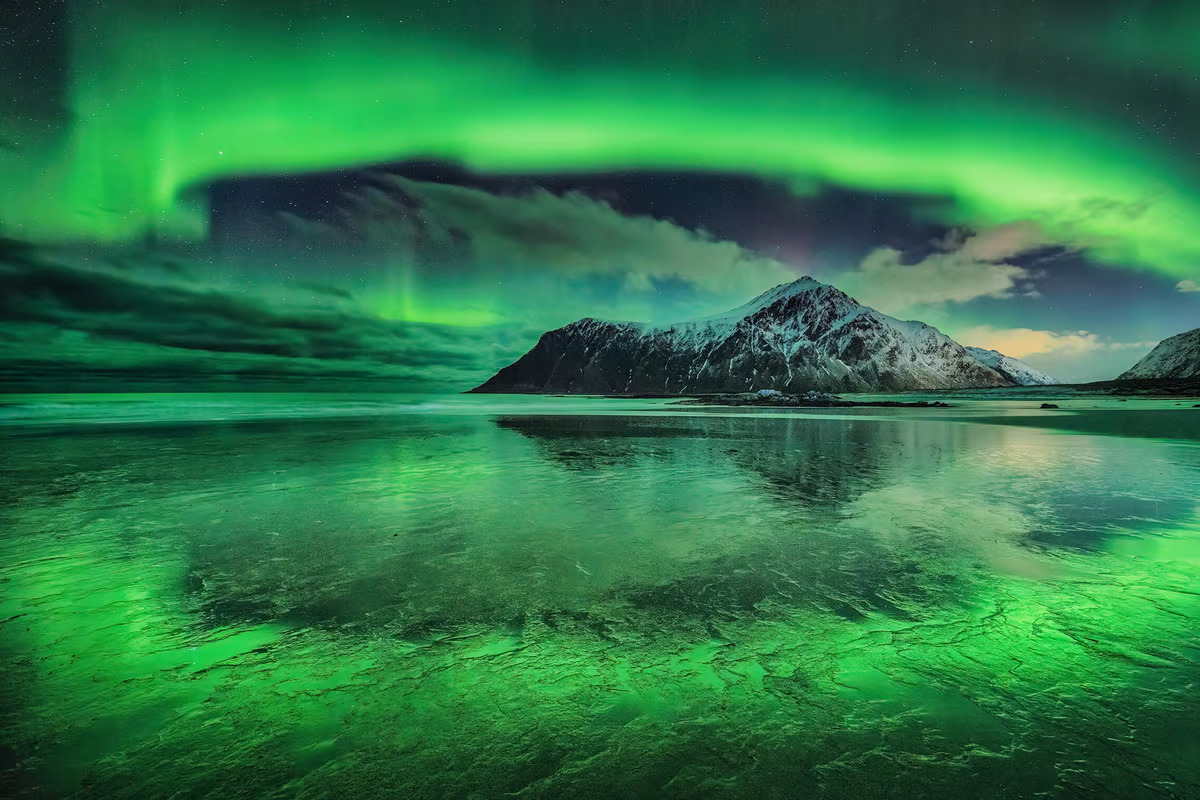 Aurorae, Runner-Up. “Circle of Light” Andreas Ettl View gallery – 20 images
Aurorae, Runner-Up. “Circle of Light” Andreas Ettl View gallery – 20 images
–
This year marked the competition’s 15th year, attracting more than 4,000 entries from 64 countries. From glittering stars and shimmering galaxies to fiery suns and silver moons, the competition attracted some impressive imagery in categories that included Galaxies, Aurorae, Our Moon, Our Sun, People and Space, Planets, Comets and Asteroids, Skyscapes, and Stars and Nebulae. Prizes were also given for Image Innovation and to the Best Newcomer, as well as to young photographers.
“This was my first year as a judge for Astronomy Photographer of the Year,” said Katherine Gazzard, Curator of Art at Royal Museums Greenwich. “As a newcomer to the competition, the technical sophistication of the entries blew me away. So many beautiful images made the shortlist, and the winning images are absolutely stunning. It has made me look at the night sky in a new light.”
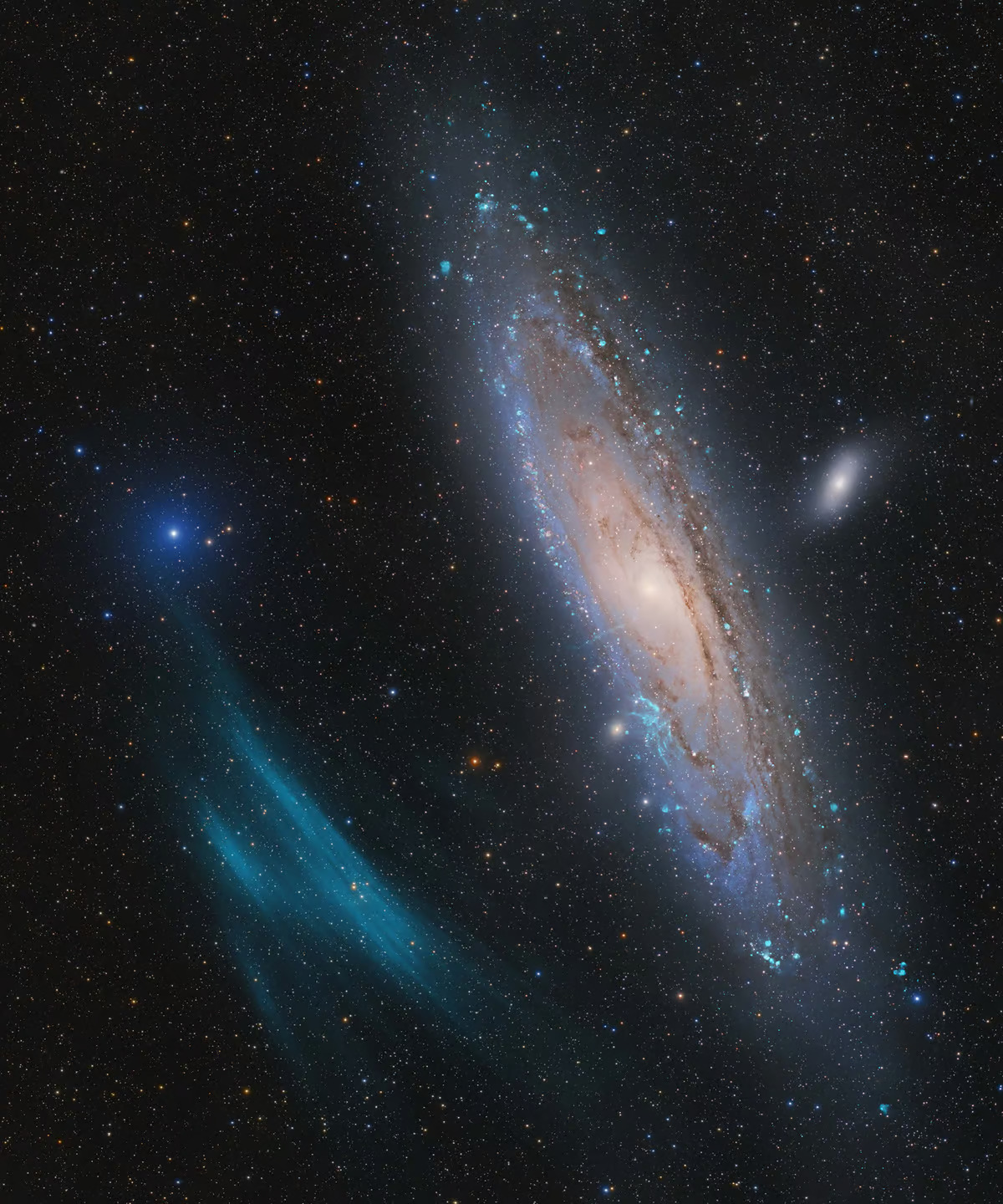
A team of amateur astronomers led by Marcel Drechsler, Xavier Strottner and Yann Sainty took out the competition’s top prize, being named the Overall Winner. Their image captured a huge blue plasma arc alongside the Andromeda Galaxy, the closest spiral galaxy to our Milky Way, which scientists are now investigating. The surprising discovery is what led to the piece being titled Andromeda, Unexpected.
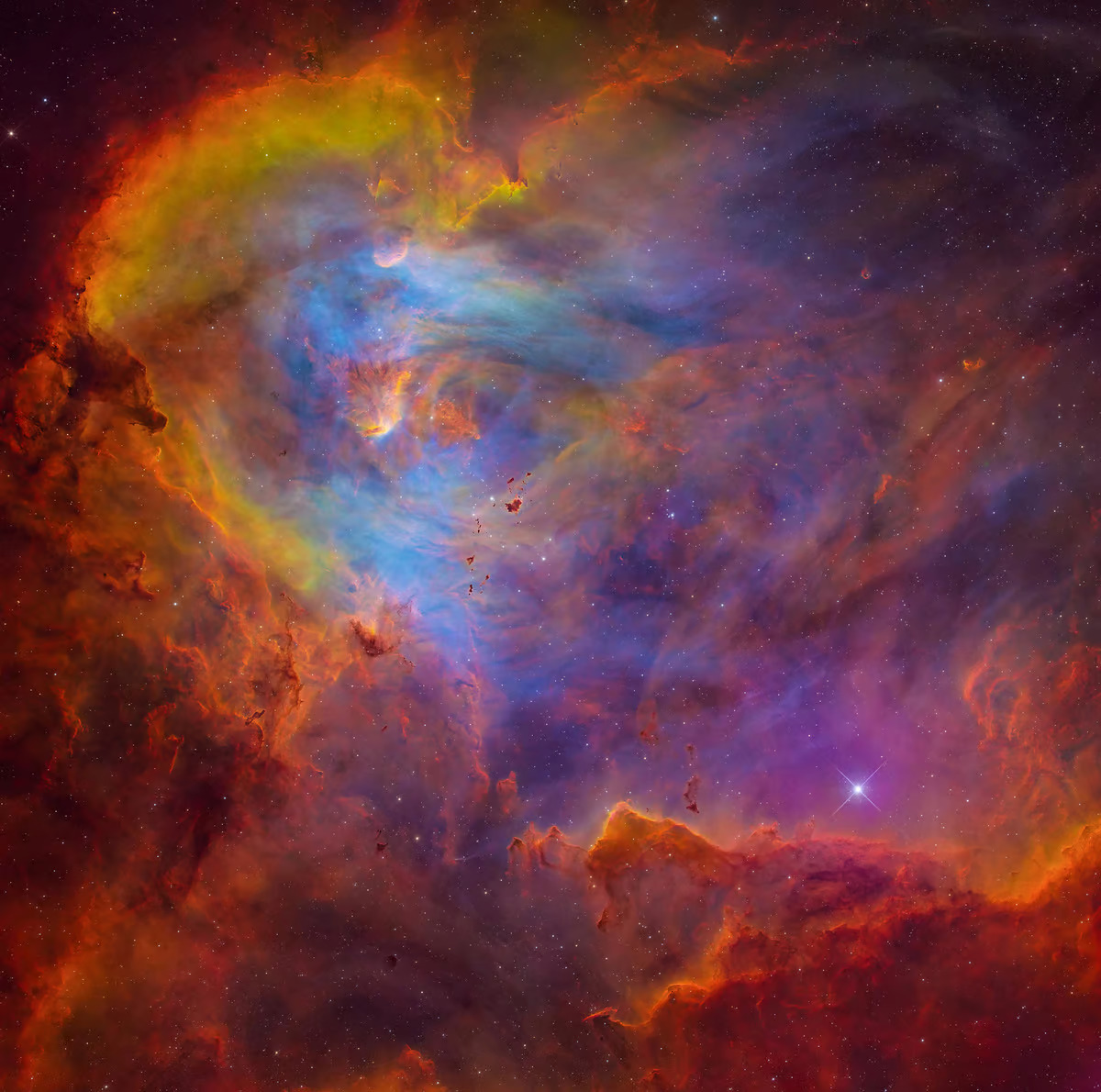
Winning the Young Photographer of the Year award were two 14-year-olds, Runwei Xu and Binyu Wang, who collaborated to produce the striking and colorful The Running Chicken Nebula.
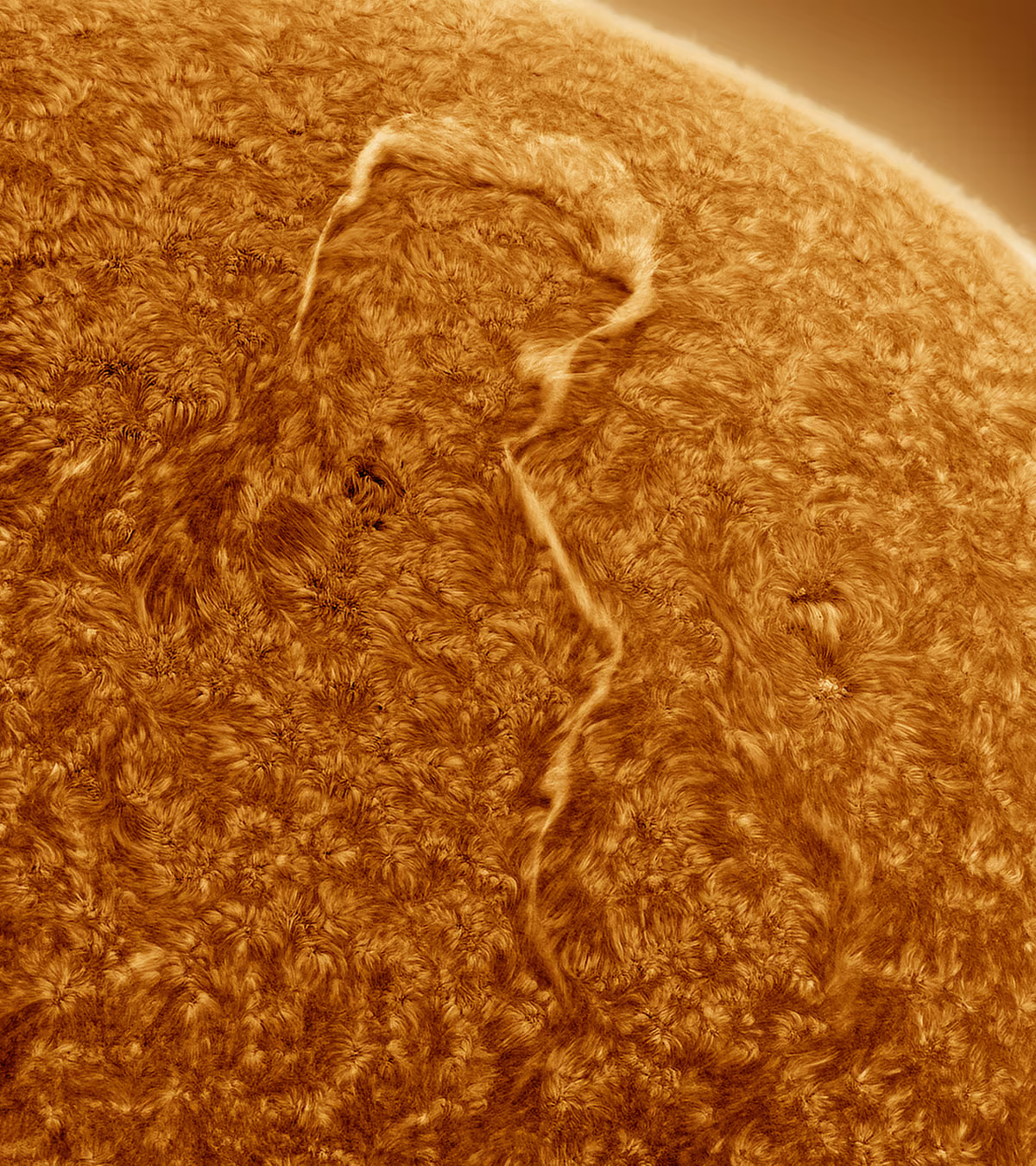
Other standouts include an image by Eduardo Schaberger Poupeau, in which plasma arcs in the Sun’s atmosphere appear to want to know the answer to something. The photo, A Sun Question, is a mosaic of two panels and won the Our Sun category.
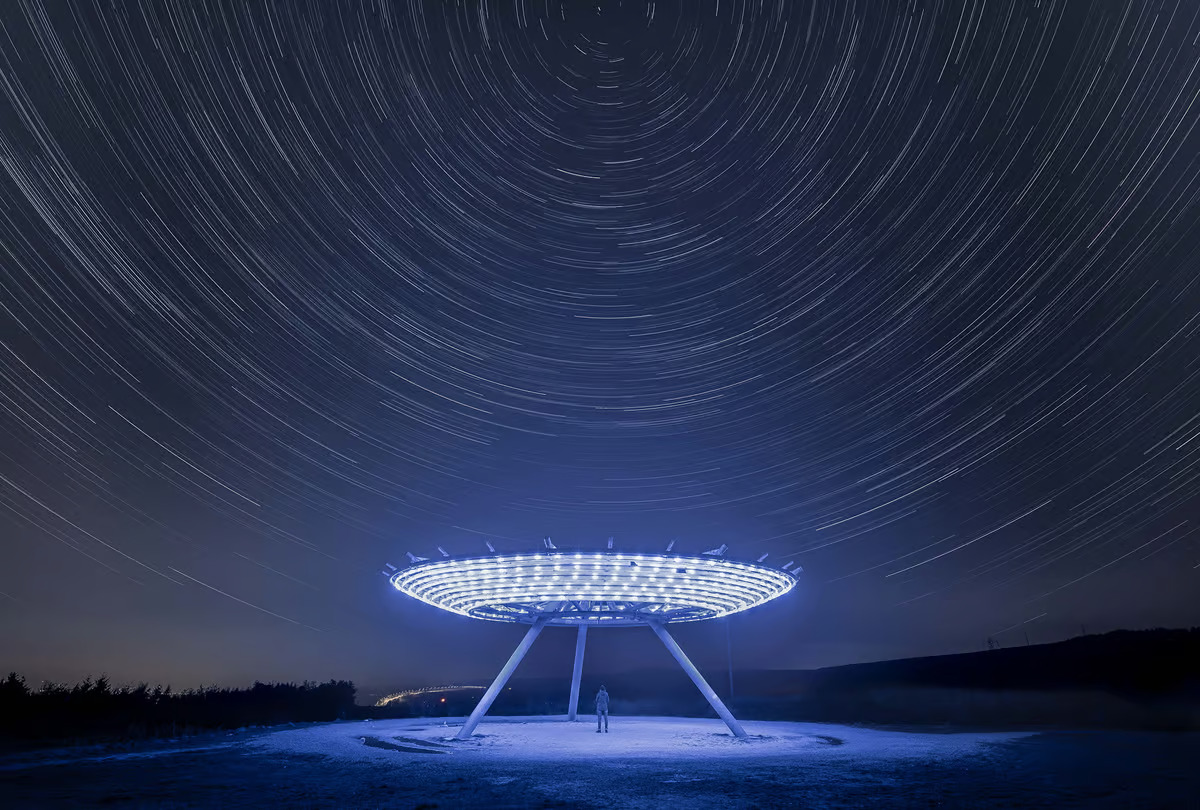
Likewise, the Highly Commended image in the People and Space category, which took inspiration from the movie Close Encounters of the Third Kind. Over an hour, Katie McGuinness took more than 150 shots of the ‘Halo’ sculpture in Haslingden, UK, and combined them to show the apparent rotation of stars around Polaris, a star in the constellation of Ursa Minor that’s commonly referred to as the North Star.
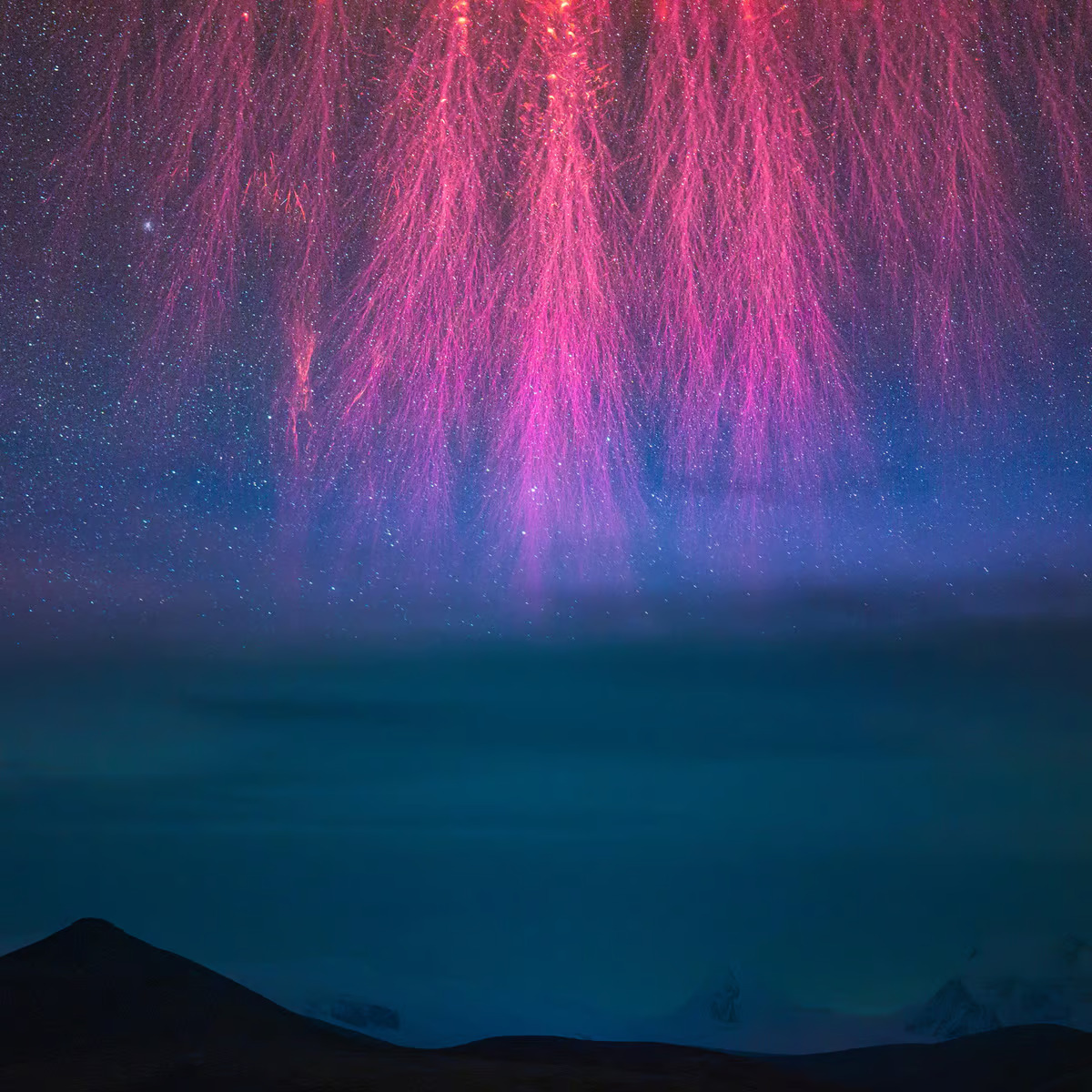
It’s understandable why the judges chose Angel An’s Grand Cosmic Fireworks as the Winner of the Skyscapes category. An captured the tendrils of an extremely rare phenomenon called red sprites, large-scale electrical discharges that occur in the mesosphere, far higher up than regular lightning. The beautiful color gradient is made more impressive by the delicate structure of the plasma visible in the image.
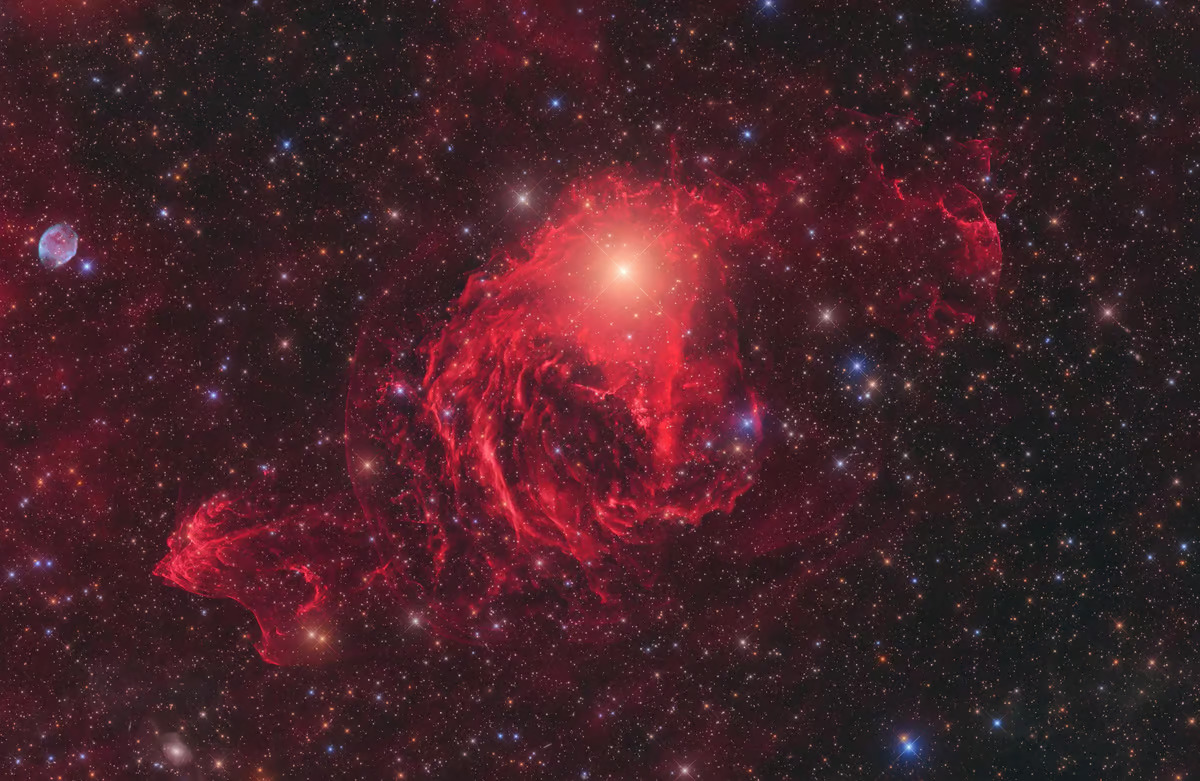
Marcel Drechsler and Xavier Strottner, two of the three astronomers who took out the Overall prize, also won in the Stars and Nebulae category and added another discovery to the winning images. On old images of sky surveys, the pair discovered a previously unknown galactic nebula containing a pair of stars surrounded by a common envelope.
The high caliber of this year’s entrants made picking the winners tough for the judges.
“Once again, entrants to the Astronomy Photographer of the Year competition have conspired to make things difficult for the judges, with a flood of high-quality images covering an amazing range of targets,” said Ed Bloomer, astronomer at the Royal Observatory Greenwich. “The highlight of this year is perhaps a number of genuine discoveries being imaged, but we’ve had wonderful efforts in every category, and I’m particularly pleased to see the continued strength of our young entrants and those eligible for The Sir Patrick Moore Prize for Best Newcomer. It has led to some intense debate amongst the judges as we try to choose the very best of the best, but we don’t mind!”
The Overall Winner will receive £10,000 (US$12,400). Winners in all other categories, including the winner of the Young Astronomy Photographer of the Year, will receive £1,500 (US$1,860). There are also prizes for runners-up (£500/US$620) and highly commended (£250/US$310) entries. The special prize winners will receive £750 (US$930).










